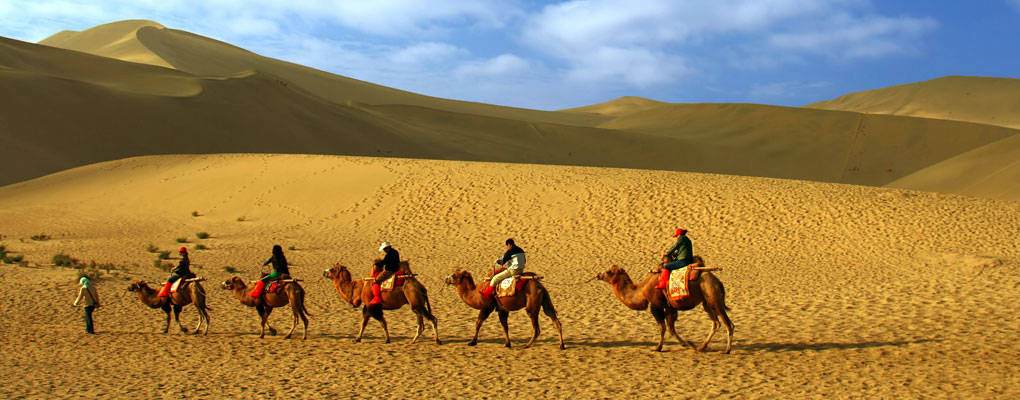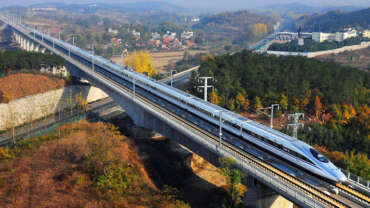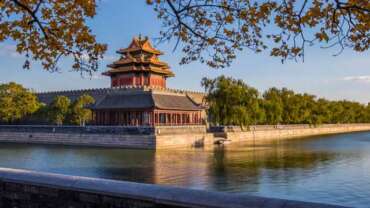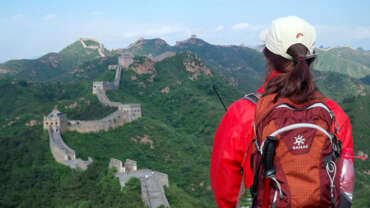The Silk Road
Follow Marco Polo’s footprints, the ancient silk road is a once in a life time journey. It was one of the most important arteries of trade and culture in world history. Centuries before planes and trains and merchants ships brought our world close together, Silk Route was the first link that ever connected East and West and the life blood of international trade in ancient time. Immensely caravans and merchants have traveled on this route between ancient China and Mediterranean bank area for two millennia. The trading activity has brought culture exchange, religions spreading and contrasts to the connected regions and formed a remarkable culture tie featured by Asian, European and the Mediterranean bank
Started from the ancient China capital city Changan (Xian at present), the Silk Route stretches more than 7000 kilometres reaching the Mediterranean bank. The route were firstly created by an envoy called Zhangqian assigned by the Han dynasty King to deliver gifts which was mainly silk for those local loads in west China area to hold their loyalty and to be an ally of China.
Since the Chinese highly qualified silk had made its fame to the western countries, the merchants sought the opportunity of trading Chinese silk along this route and gained a great fortune. Few people would really finish the whole silk route journey rather they just mainly traded in a certain period of certain local crafts such as silk, blanket and carpet etc to other merchants of other periods. Each time everybody marked the price up along the way. In the end, silk, perfume, jade and sliver from China, cotton from India, ivory from Saudi Arabic, spicy from Iran and olive oil and wine from Mediterranean bank were all traded along the Silk Road. Thousands and thousands people have taken part and numerous goods traded in this great international trade at that time. The main cities along the Silk Road had grown larger and more important in helping the trade and merchant and caravans. Cities like Changan, Dunhuang, Kashgar, Istanbul and Rome had gained great benefits along the trading process.
Today, Chinese president Xi Jinping has announced to invest 14 billion dollars to boost the new Silk Road program which has a rather poetic name called One Belt One Road. It is more like a modern version of the ancient Silk Road, call it the “Silk Road Plus” if you are an Apple fan. The “One Belt One Road” is aiming to help those connected regions in culture and economy exchange with a more advance road net work consisted by airplanes, railways, high ways and even container ships.
While the ancient Silk Road today is rather a historical travel route on which you can experience interesting history and enjoy exotic culture. The Chinese section Silk Road stretches more than 4,000km on the gigantic regions of northwester China, an almost dizzying agglomeration of desert, grassland, raging river and colossal mountains. The best highlights are a series of historical towns, ruins and cultural sites linked as a chain of pearls which are Terracotta Warriors in Xi’an, the Mogao Grottoes in Dunhuang, the Qinghai Lake in Xining, the Heaven Lake in Urumqi, the Gaochang Ancient City in Turpan, etc.
There are also several ethnic groups regions along the silk route such as Mongolians, Huis, Uygurs and Hazaks who have maintained their unique traditions, cultures, living habits and religious beliefs embodying the culture exchange soul spirits of the Silk Road. All these magnificent ancient towns fulfilled with exotic cultures and mysterious history is waiting to present you a splendid Silk Road journey! Pack your baggage! Join us to trace the footprints of ancient travelers and create a unique Silk Road journey of your own!!
Silk Road Facts
The Silk Road is a route to discover the history and the ancient culture about China. In its Chinese section, it stretches more than 4,000km linking cities like Xi’an, Lanzhou, Xining, Dunhuang, Turpan and Urumqi from east to west China. In Silk Road’ heyday, Korean peninsula, Japan region, Indian peninsula, Mediterranean east bank area and Middle East region, all involved in this international trading route. Xi’an was the world richest city in the world and crowded by the merchant all across the globe in the Silk Road heyday. Today Xi’an is modern city of central China with similar population with London and yet still it is not the top ten best cities in China. In the west, it was during the time of the Byzantine Empire, the Silk Road reached its peak.
The Silk Road also represents an early phenomenon of political and cultural integration due to inter-regional trade. Immeresly goods and treasures were not the only thing that got exchanged through the ancient route, religions and cultural traditions were also spread along the Silk Roads. Buddhism and Islam both spread into China though the Silk Road, numerous western merchants settled down in ancient China and merged in those ethnic group people along the silk route.
The Silk Road was not just a road or a trading route, the concept also refers to both the terrestrial and the maritime routes connecting Asia and Europe. The overland Steppe route stretching through the Eurasian steppe is considered to be the ancestor to the Silk Road. It was during the Ming dynasty in ancient China, the maritime silk route had reached its peak. It was after the Ming dynasty —— during the Yuan dynasty that the world-known Venetian traveler Marco Polo followed silk route reached China overland via Khotan in 1287–88.
Silk Road History
The merchants and Chinese silk were reaching Rome before the time of Christ. Through this Silk Road, the Chinese civilization was introduced to the Western countries and vice versa the Western culture came to the East. The Silk Road is a chapter recording the friendship between the European and Asian peoples. Traders of Chinese, Persians, Greeks, Syrians, Romans, Armenians and Indians…exchanged peculiar goods of their county, such as Chinese silk and tea, nephrite jade, spice, etc.
With a history more than 2,000 years, the Silk Route in China can be dated back to the Han dynasty (207 BCE – 220 CE) in ancient China. Though the Silk Road was mainly a trading route, it was started as a political mission in the first place. During the West Han Dynasty, the contemporary king Wu had sent an ambassador called Zhang Qian to visit western region countries to seek for potential allies to fight against the Huns which was a threat to central China in the north at that time. Zhang Qian brought a large amount of treasures from China which was mainly high quality exquisite silk to present to those kings and loads in west regions as a gift of good will. It was a treacherous journey and Zhang Qian didn’t succeed until the second time he made his journey west years later. He was a brave explorer, a brilliant diplomatist and the first man broke down the barriers between the ancient China, western regions and the central Asia. What he did made a great foundation to the Silk Route formation in later years.
In the following years in history, many great figures had made significant contributions to the development of the Silk Road. Alexander the Great founded the city of Alexandria Eschate during the Greek empire which later became a major staging point on the northern Silk Route. Not to mention those Chinese kings had subsequently sent numerous embassies to Syria, Anxi, Tiaozhi and Tianzhu over the years to keep the long-term trading connections with those Silk Road region countries. These connections marked the beginning of the Silk Route trade network had extended to the Roman Empire and the Silk Road finally reached its peak during the Byzantine Empire time in the west.
Today, the ancient Silk Road is more like a historical textbook for everyone to read and to catch about what happened during that ancient time. It played a significant role in the development of the civilizations of China, the Korea, Japan, the India, Persia, Europe, the Horn of Africa and Arabia, opening long-distance political and economic relations between the civilizations. In June 2014, UNESCO designated the Chang’an-Tianshan corridor of the Silk Road as a World Heritage Site. Silk Road in China now has brought great elegance to the tourism in China even in the world!
Silk Road Travel Tips
Silk Road travel refers to Silk Road cities travel. The cities along this route just like pearls shining with unique features. In China section, it goes across five provinces namely Shaanxi, Gansu, Ningxia, Qinghai and Xinjiang. While the representative destinations of them are Xi’an, Lanzhou, Xining, Dunhuang, Turpan, Urumqi, and Kashgar. It is a journey covering a vast land area from central China to northwest China, without doing a well-prepared homework plan, this mysterious journey could be confusing.
So how to pick out a more reasonable and economic route among these Silk Road destinations? What should be packed in Silk Road Tour? When is the best time for Silk Road travel and when shall be avoided? Notes on security and do’s and don’ts along the Silk Road journey etc, all could be found here in this page. We have hand-picked the most frequently asked questions and most read & useful travel tips about the Silk Road to settle your doubts and ensure you a worry free and comfortable journey. With this comprehensive travel information, you can make out a Silk Road Trip which is regarded as one of your China tours in your life.
Silk Road Tours
The Silk Road is a famous trade passageway in ancient China, going across Asia to Europe. Since it opens, the Silk Road has attracted so many worldwide travelers to come here explore and experince. TopChinaTravel Silk Road Adventure which is made out of our experience and knowledge helps modern travelers to explore this road and immerse into this ancient saga. You’ll see fascinating places, such as Dunhuang, Turpan, Urumqi and Kashgar, offering irrefutable evidence by their magnificent ruins that you are walking on the sun baked sands of a history created with blood, sweat and tears.







